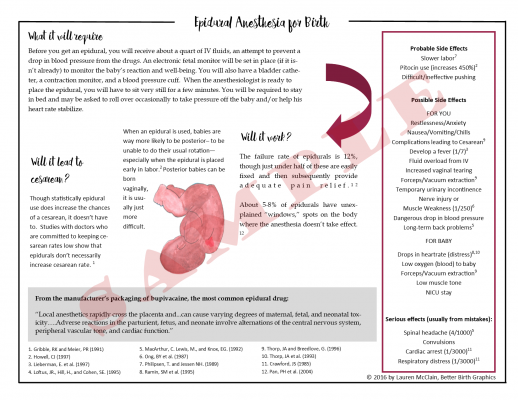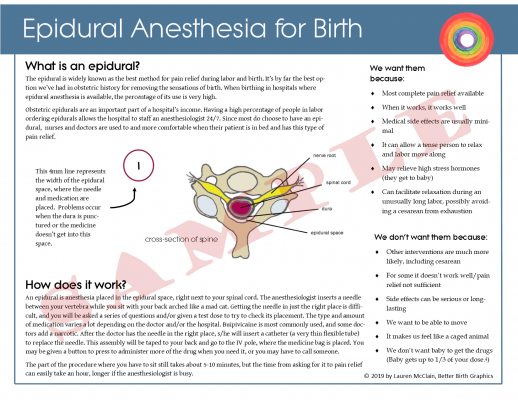All about epidural handout and fact sheet. How epidural works, why people like epidural, why they don’t, the risks, benefits, and details.
Few procedures are as misunderstood as the epidural. It’s wise to know before labor the pros and cons of epidural, ways to use it in labor and what it’s like to get an epidural.
Epidural anesthesia can prevent some labors from ending up in the operating room. It can allow rest, alleviating the exhaustion that can prevent effective pushing. It can allow relaxation, allowing tension and anxiety to release.
Especially when placed early in labor, it is likely to slow and complicate the experience for you and baby.
There are risks to the labor, risks to the baby, and risks for you. Most of these are small, but it’s good to know before you choose.
An epidural is placed after an infusion IV fluids that protects against a dangerous blood pressure drop from the medication of the epidural. You sit with your back curled and the anestesiologist puts a large needle between your vertebra. Once he believes it’s in the right place, he gives a test dose and replaces the needle with a catheter, which drips the drugs into your epidural space, next to the spinal cord.
Epidural works well for most people, but in some cases doesn’t work, only works one one side or in one area (called a window), or the pain relief isn’t sufficient. In this case they can try again and usually get it right the second time.
There are a host of possible medical complications, including restlessness or anxiety, nausea, fever. The use of Pitocin (fake oxytocin, the labor hormone) rises 450% with epidural use.
Especially when the epidural is in place for a long time, risks to the baby include drop in heart rate (distress), low oxygen to the baby, low muscle tone, and a NICU stay. Babies born with epidural are also more likely to need vacuum or forceps to get out.
Serious or long-term complications are very rare.
Get all this and more information about epidural from the epidural handout.







